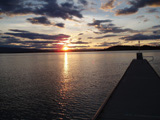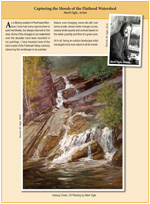A Sense of Place
“You can’t know who you are until you know where you are.” - Wendell Berry
There are many definitions for the word “place.” Physical environment. Physical surroundings. A locality used for a special purpose. A proper or designated niche or setting. There are numerous other simple definitions for this small, yet powerful word. A movement has long been afoot to more completely define the places we live (life-places) and to redefine their boundaries according to natural changes in the land. As an example, we now study and manage terrestrial (land) and aquatic (water) ecosystems based on bioregional concepts that look to natural boundaries such as watersheds as opposed to those designated by human activity.
From the terrain that developed over millions of years, to the current climate and weather, each place has its distinctive offerings (such as abundant recreation and robust soils for farming) and its individual challenges (such as long winters and a short growing season). These elements work in concert each day to shape our lives. Every location offers us a unique set of circumstances and conditions that define how we live in it. So, place is where and how we live, work, and play, it informs our viewpoints, and it is where we develop a sense of belonging.
In 1977, Peter Berg and Raymond Dasmann suggested that living-in-place meant “following the necessities and pleasures of life as they are uniquely presented by a particular site, and evolving ways to ensure long-term occupancy of that site. A society which practices living-in-place keeps a balance with its region of support through links between human lives, other living things, and the processes of the planet – seasons, weather, water cycles – as revealed by the place itself.” (McGinnis, 1999) Today we continue to see living-in-place as a way in which people coexist with the unique offerings of a location without exploiting and depleting them. The Flathead Watershed is a place with exceptional natural beauty, productive soils, abundant recreational venues, ancient and newfound spiritual connections, and diverse economic opportunities. Those of us who are fortunate enough to live in the Flathead Watershed are part of a truly extraordinary place.
 |
| Figure 1.21: Young explorers in the Flathead Watershed. Source: Karen Nichols |



